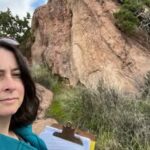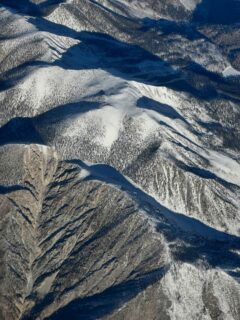The first event to generate seismic surface waves occurred in late December 2021. An earlier event, S1000a, was subsequently associated with an impact crater near the Tharsis province, and additional surface waves were identified. Our group analyzed these surface waves, measuring Rayleigh wave dispersion curves and inverting them to obtain the first constraints on Mars’s shallow structure away from the lander. We performed the data inversions using two different algorithms, including a non-linear code developed by graduate student Erik Weidner, as originally proposed.
This study provided new seismic constraints on the structure of the crust north of the equatorial dichotomy, which helped infer higher crustal density than inferred beneath the lander. It suggests either compositional differences or reduced porosity in the volcanic areas traversed by the surface waves. Such structural variations hold implications for models of the formation and thickness of the Martian crust. This work resulted in a collaborative paper (Kim et al., 2022) that was published in the journal Science:
Kim, D. et al. (2022), Surface Waves and Crustal Structure on Mars, Science, 378 (6618), 417-421, doi:10.1126/science.abq7157































































